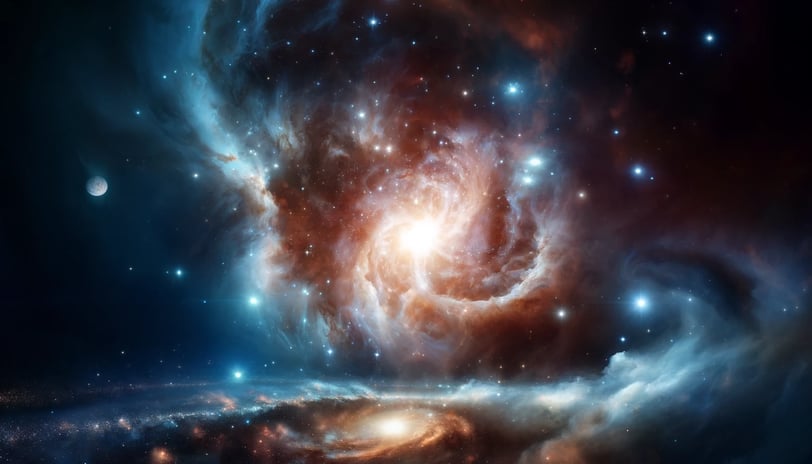Revolutionary Discovery: Oxygen Detected in the Most Distant Galaxy Ever Observed
Astronomers have made a remarkable discovery by identifying the presence of oxygen in the most distant galaxy ever observed, named JADES-GS-z14-0. Located an astonishing 13.4 billion light-years from Earth, this detection suggests that galaxies began forming and evolving much earlier in the universe than previously thought.
3/21/20252 min read


How Was the Galaxy Identified?
The JADES-GS-z14-0 galaxy was first identified by the James Webb Space Telescope in 2023. Since its light took 13.4 billion years to reach Earth, scientists are essentially observing the universe as it was less than 300 million years after the Big Bang.
To confirm the composition of this galaxy, researchers used the Atacama Large Millimeter/submillimeter Array (ALMA), an observatory in Chile. This powerful instrument successfully detected clear signals of oxygen's presence, a critical breakthrough in understanding the chemical evolution of the early universe.
Why Is the Detection of Oxygen Important?
The identification of oxygen is highly significant because it indicates that JADES-GS-z14-0 had already undergone sufficient stellar formation processes to enrich its environment with heavier elements.
Previously, cosmological models suggested that galaxies at such an early stage in the universe's history would not yet have significant amounts of oxygen and other heavy elements. This discovery challenges that notion, revealing that chemical evolution may have occurred more rapidly than anticipated.
A Challenge to Existing Theories
Researchers from the European Southern Observatory (ESO) found that JADES-GS-z14-0 contains a much higher amount of heavy elements than expected. This suggests that the stellar evolution process occurred extremely rapidly in this part of the early universe.
According to scientist Rychard Bouwens from Leiden Observatory, these results indicate that galaxy formation and growth may have taken place at a much faster pace than what current theories predict. If this pattern is common among other early galaxies, astronomers may need to revise their understanding of the universe’s early years.
What Does This Mean for Cosmic Evolution?
The presence of oxygen in such a distant galaxy implies that multiple generations of massive stars had already formed and exploded as supernovae. This process would have enriched the interstellar medium with heavy elements in a very short time.
Traditionally, scientists believed that galaxies required more time to complete several cycles of star birth and death before accumulating significant amounts of oxygen. The findings regarding JADES-GS-z14-0 suggest that this process was happening much faster than previously thought, implying a more dynamic and turbulent early universe.
Future Research and Observations
This discovery expands our knowledge of the origin and evolution of the first galaxies. It suggests that the chemical enrichment of the universe happened much earlier than expected.
Future observations with the James Webb Space Telescope and other advanced instruments will be crucial in studying these primordial galaxies in even greater detail. Understanding their composition, structure, and growth will provide deeper insights into the processes that shaped the cosmos as we know it today.
By continuing to explore the most distant regions of the universe, astronomers hope to answer fundamental questions about how galaxies formed, evolved, and contributed to the creation of the chemical elements necessary for life itself.
Explore
Discover diverse topics in one convenient hub.
Connect
Learn
contact@mindstormblog.com
© 2025. All rights reserved.


